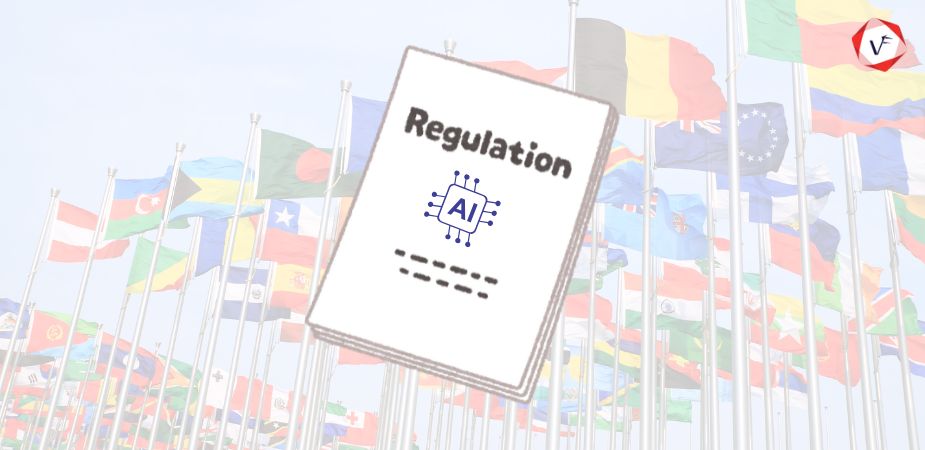The excitement around artificial intelligence (AI) has given way to something more sobering in 2025: responsibility. With its integration into healthcare, hiring, policing, finance, and even warfare, AI is no longer just a frontier for innovation—it’s a force that governments are now working hard to contain, shape, and monitor. While approaches differ, one thing is clear: the world is waking up to the need for AI regulation.
Let’s look at how countries across the globe are addressing the challenge of governing AI in 2025, what they’re prioritizing, what models they’re following, and where the world might be heading next.
Why Regulate AI in the First Place?
Before diving into national strategies, it’s worth understanding why regulation has become such a priority.
AI is shaping human decisions: In many sectors, AI doesn’t just assist—it decides. Whether it’s approving a loan, screening a job application, or identifying someone on CCTV, these systems affect real lives.
The risks are growing: Misinformation, deepfakes, surveillance, and biased algorithms have proven they’re not just theoretical problems—they’re already impacting societies.
There’s a gap between innovation and law: Technology often evolves faster than legal systems can keep up. This leaves individuals and organizations vulnerable in ways lawmakers never predicted.
With these concerns in mind, countries are now moving—some cautiously, others aggressively—toward clear AI governance.
The European Union: Structured and Comprehensive
The EU is arguably leading the global conversation on AI regulation, thanks to its landmark AI Act, which entered enforcement in 2025.
Key Highlights of the EU AI Act
Risk-based classification:
- Unacceptable risk: Prohibited (e.g., social scoring, predictive policing)
- High risk: Strict obligations (e.g., AI in hiring, law enforcement)
- Limited risk: Requires transparency (e.g., chatbots that mimic humans)
- Minimal risk: Minimal requirements (e.g., AI-powered spam filters)
Strict obligations for high-risk AI systems, including:
- Risk assessments
- Documentation and audit trails
- Human oversight mechanisms
- Bias testing and accuracy checks
Heavy penalties for violations, up to 6% of global annual revenue for companies that fail to comply.
The EU’s approach is regulation-first, based on the principle of precaution. It reflects the bloc’s broader commitment to ethical tech, consumer protection, and human rights.
United States: Fragmented but Focused
Unlike the EU, the U.S. has opted for a sectoral and state-level approach to AI regulation.
What’s Happening in 2025
No overarching federal AI law yet, but:
- A growing number of state-level AI bills are active. California, New York, and Illinois have passed specific regulations related to facial recognition, hiring algorithms, and consumer data use.
- The Biden administration’s 2023 Executive Order on Safe, Secure, and Trustworthy AI is influencing federal agency behavior, prompting the FDA, DOJ, and FTC to issue AI-specific guidance.
Sector-specific regulation is key:
- The FDA monitors AI in medical devices.
- The FTC cracks down on deceptive or biased AI in advertising and consumer services.
- The EEOC is investigating automated hiring systems for discrimination.
Focus on innovation and competitiveness, meaning regulation often walks a fine line to avoid stifling Silicon Valley’s momentum.
The U.S. model is more decentralized but still evolving. In 2025, we’re seeing increased pressure for a federal AI framework, especially as incidents involving biased or harmful AI grow more frequent.
China: Centralized and Strategic
China has taken a top-down approach to AI governance, aligning regulation with its long-term national strategy.
In 2025, here’s what’s in place
The Algorithmic Recommendation Law (enforced since 2022) mandates transparency and accountability in recommendation systems, especially on platforms like TikTok and e-commerce sites.
Real-name authentication is mandatory for many AI systems, especially those used in communication and social platforms.
Strict content controls:
- Deepfakes must be labeled.
- Generative AI content is monitored for “social responsibility,” aligning with government values.
Mass surveillance AI remains largely unregulated domestically but is tightly controlled by the state.
China’s AI regulation isn’t just about safety—it’s about control, political stability, and long-term dominance. While it leads in implementation speed, its model also raises serious concerns around civil liberties and global influence.
United Kingdom: Risk-Based, Innovation-Friendly
Post-Brexit, the UK has taken a slightly different path from the EU, emphasizing regulation that fosters innovation while managing risk.
Core themes of the UK’s AI governance in 2025
Decentralized oversight: Rather than one central AI authority, different regulators (like Ofcom, the CMA, and ICO) are tasked with managing AI use in their respective sectors.
Five guiding principles:
- Safety
- Transparency
- Fairness
- Accountability
- Contestability (the right to challenge an AI decision)
Focus on voluntary codes and regulatory sandboxes, allowing companies to experiment under controlled conditions.
The UK sees AI as a key driver of its economic future. Its light-touch approach might appeal to startups and investors, but some critics argue it lacks the enforcement muscle needed to prevent abuse.
Canada and Australia: Aligning with Global Standards
Both countries are taking a cautious but deliberate approach, generally aligning with EU-style frameworks but tailoring them to local needs.
Canada
In 2025, Canada is finalizing the Artificial Intelligence and Data Act (AIDA).
The law will:
- Require risk assessments for high-impact AI systems.
- Prohibit systems that cause serious harm or are discriminatory.
- Include provisions for individual redress and complaints.
Australia
Working toward a “responsible AI” framework, guided by ethical principles but with an emphasis on voluntary compliance.
Specific laws are being considered for:
- AI in financial services
- Government use of surveillance tools
- Health-related AI applications
Both countries recognize the need for transparency and accountability, but they’re proceeding slowly, making sure regulations don’t hinder AI’s positive potential.
India: Catching Up, With Global Influence in Mind
India’s AI regulation is still in its early stages in 2025, but the direction is becoming clearer.
Current developments
The government has released a National Strategy for Responsible AI, focused on inclusion, safety, and public benefit.
Efforts are underway to regulate:
- AI in academic settings to prevent cheating and identity fraud during exams
- Deepfake content and misinformation
- Automated decision-making in welfare schemes
India is also playing a role in global AI diplomacy, joining international discussions on ethical standards and governance frameworks.
International Collaboration: A Work in Progress
While AI doesn’t recognize borders, regulation still does. That’s why many countries are now participating in cross-border initiatives.
Examples include
OECD AI Principles: A non-binding framework adopted by over 40 countries to guide responsible AI use.
Global Partnership on AI (GPAI): An international effort focused on fostering cooperation in AI research and policy development.
UNESCO’s AI Ethics Guidelines: Designed to uphold human rights and promote sustainable practices in AI innovation.
However, a comprehensive global treaty or unified regulatory framework remains absent. This fragmented landscape of laws and principles creates challenges for cross-border compliance, particularly for multinational technology companies.
The Road Ahead: What’s Next for AI Regulation?
As 2025 unfolds, here are a few trends shaping the next phase of AI governance:
From voluntary to mandatory: More countries are moving beyond ethics guidelines into legally enforceable rules.
Focus on generative AI: Tools like ChatGPT, DALL·E, and others have sparked debates on misinformation, copyright, and creative rights.
Regulatory sandboxes are gaining traction: Governments are allowing companies to test AI in controlled environments before going public.
Demands for explainability are rising: Users increasingly want to understand how AI systems make decisions that affect them.
Frequently Asked Questions About AI Regulation
AI regulation is necessary because AI systems are making critical decisions affecting real lives in healthcare, hiring, finance, and policing. Growing risks include misinformation, deepfakes, surveillance, and algorithmic bias. Additionally, technology evolves faster than legal systems, leaving gaps in protection for individuals and organizations.
The EU AI Act, which entered enforcement in 2025, is a comprehensive regulation using risk-based classification. It prohibits unacceptable risk AI (like social scoring), imposes strict obligations on high-risk systems (hiring, law enforcement), requires transparency for limited-risk AI, and has minimal requirements for low-risk applications. Violations can result in penalties up to 6% of global annual revenue.
The US takes a sectoral and state-level approach rather than comprehensive federal regulation. States like California, New York, and Illinois have passed specific AI laws. Federal agencies like the FDA, FTC, and EEOC issue sector-specific guidance. The approach emphasizes innovation and competitiveness while addressing risks on a case-by-case basis.
China takes a centralized, top-down approach aligned with national strategy. Key measures include the Algorithmic Recommendation Law requiring transparency, mandatory real-name authentication, strict content controls requiring deepfake labeling, and monitoring of generative AI content for social responsibility. The focus is on control, political stability, and long-term dominance.
No comprehensive global treaty exists yet. However, international initiatives include OECD AI Principles (adopted by 40+ countries), Global Partnership on AI (GPAI) for cooperation in research and policy, and UNESCO’s AI Ethics Guidelines. The fragmented landscape creates challenges for cross-border compliance, especially for multinational companies.
Regulatory sandboxes are controlled environments where companies can test AI systems under government supervision before public release. They allow innovation while managing risk, helping regulators understand new technologies and companies to refine their products within legal boundaries.
Final Thoughts on AI Regulation in 2025
AI regulation in 2025 is still in flux, but it’s no longer just an idea. From the structured rules of the EU to the strategic controls of China and the innovation-focused approaches in the UK and U.S., the world is beginning to draw the lines.
As technology grows smarter, faster, and more deeply embedded in our lives, the challenge isn’t just how to control it, but how to do so responsibly, without slowing down the good it can offer. Regulation, in this context, isn’t a brake. It’s a steering wheel.
And in 2025, the world has just started learning how to drive.





